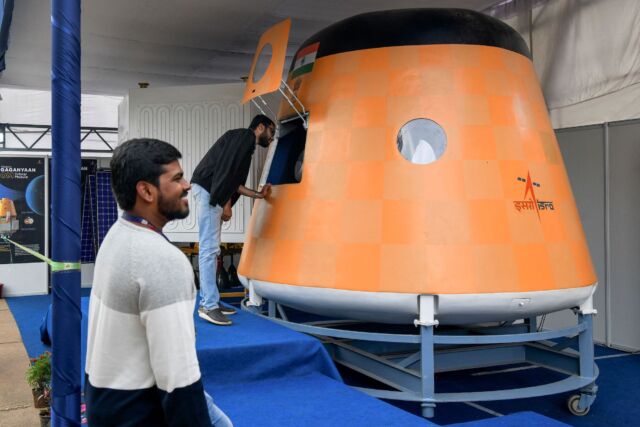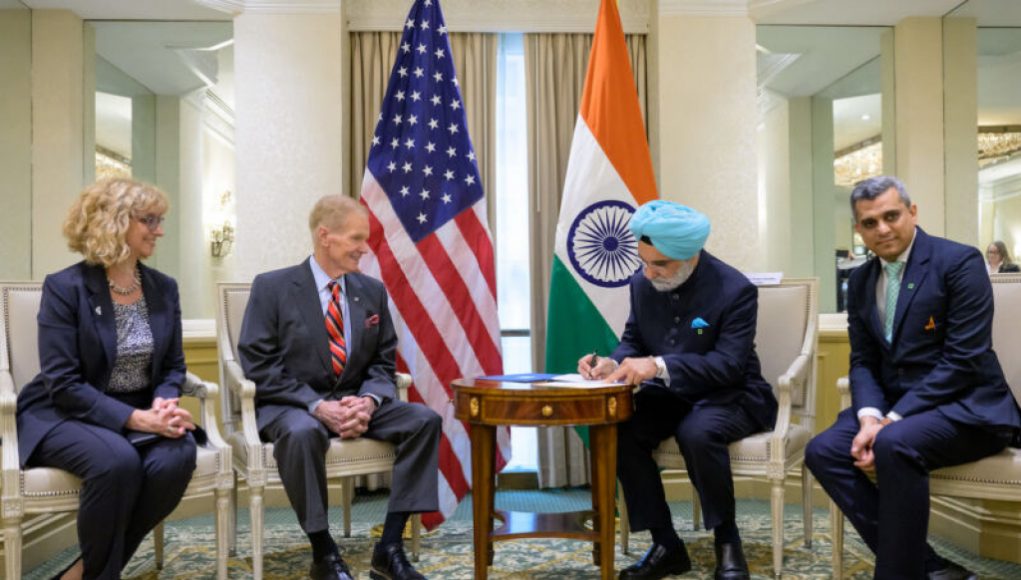India’s recent signing of the Artemis Accords has sparked excitement and speculation about the country’s potential role in space exploration. As the 27th nation to join this non-binding agreement, India is aligning itself with like-minded countries in promoting peaceful and transparent exploration of space. The accords cover various principles, including the registration of space objects, the release of scientific data, and a commitment to refrain from claiming territory on celestial bodies.
The Artemis Accords were initiated during the Trump administration and have gained support from the current NASA chief, Bill Nelson. Nelson sees these principles as common sense, emphasizing the importance of cooperation and respect among nations in space exploration.
While the specifics of collaboration between the US and India are still unclear, Nelson plans to visit India later this year to discuss potential objectives for a strategic framework in human spaceflight cooperation. However, it’s important to note that signing the Artemis Accords does not guarantee India’s involvement in NASA’s Artemis program, which aims to return astronauts to the Moon and eventually send humans to Mars.
Despite this, India’s own space ambitions are noteworthy. The country is developing a human-rated spacecraft called Gaganyaan, which could be ready for low-Earth orbit missions by 2025. This makes India a significant player in the global space development landscape, as it joins the ranks of signatories to the Artemis Accords while actively pursuing lunar and Martian programs.
Advertisement

“The fact that India intends to fly its own astronauts in the future is significant,” Nelson acknowledged. He described India as a “sleeping giant” that is rapidly awakening and becoming a crucial player in global space development. The Artemis program, which aims to land astronauts on the Moon by the end of this decade, could greatly benefit from India’s involvement.
While the specifics of India’s role in the Artemis program are yet to be determined, the country’s track record in space missions is impressive. India has already launched as many missions as Japan and Europe combined this year, with another significant launch scheduled for later this month. Additionally, India successfully sent a spacecraft to Mars a decade ago and is relied upon by international satellite operators for orbital launches.
Prior to signing the Artemis Accords, India’s space agency, the Indian Space Research Organization (ISRO), and NASA were already collaborating on the development of the NISAR radar Earth observation satellite. This partnership demonstrates the potential for future cooperation in the realm of human spaceflight and space exploration.
India recently made strides in developing its abilities in space exploration as Prime Minister Narendra Modi and other leaders met with the National Aeronautics and Space Administration (NASA) to discuss partnerships. This meeting represents an effort for India to expand its role in space exploration and become a major space power.
In a meeting with NASA chief Jim Bridenstine last Monday, India discussed ways to collaborate on projects in human space exploration. Earlier this year, India became the first nation to reach the moon’s south pole with the successful mission of its Chandraaya probe. Modi and his colleagues discussed potential partnerships that will allow for manned missions to the moon, a proposed goal of India’s space program. With increased cooperation with NASA, India could become a key player in the race for colonizing other worlds.
Prior to the meeting, Bridenstine praised India’s progress in space exploration and painted a positive outlook on the partnership’s potential. “We at NASA know that India is a leader in the exploration of space, and that the partnership we have with them is very important,” he said. He also emphasized the importance of collaboration between the two space agencies, noting that “we must work together to build a brighter future.”
The meeting between the two nations marks a significant step for both NASA and India. With the partnership, both countries stand to benefit as they gain access to each other’s technology and capabilities, allowing for further innovation and research. Such collaboration is essential if India wishes to pursue its ambitions of space exploration and to become a leading force in the industry.
As India’s space program continues to make headway, the world looks to the possibilities of what this cooperation will bring. It is certainly a turning point in the expanding space exploration industry, and one that is sure to leave a lasting impact on the future of space exploration.




















